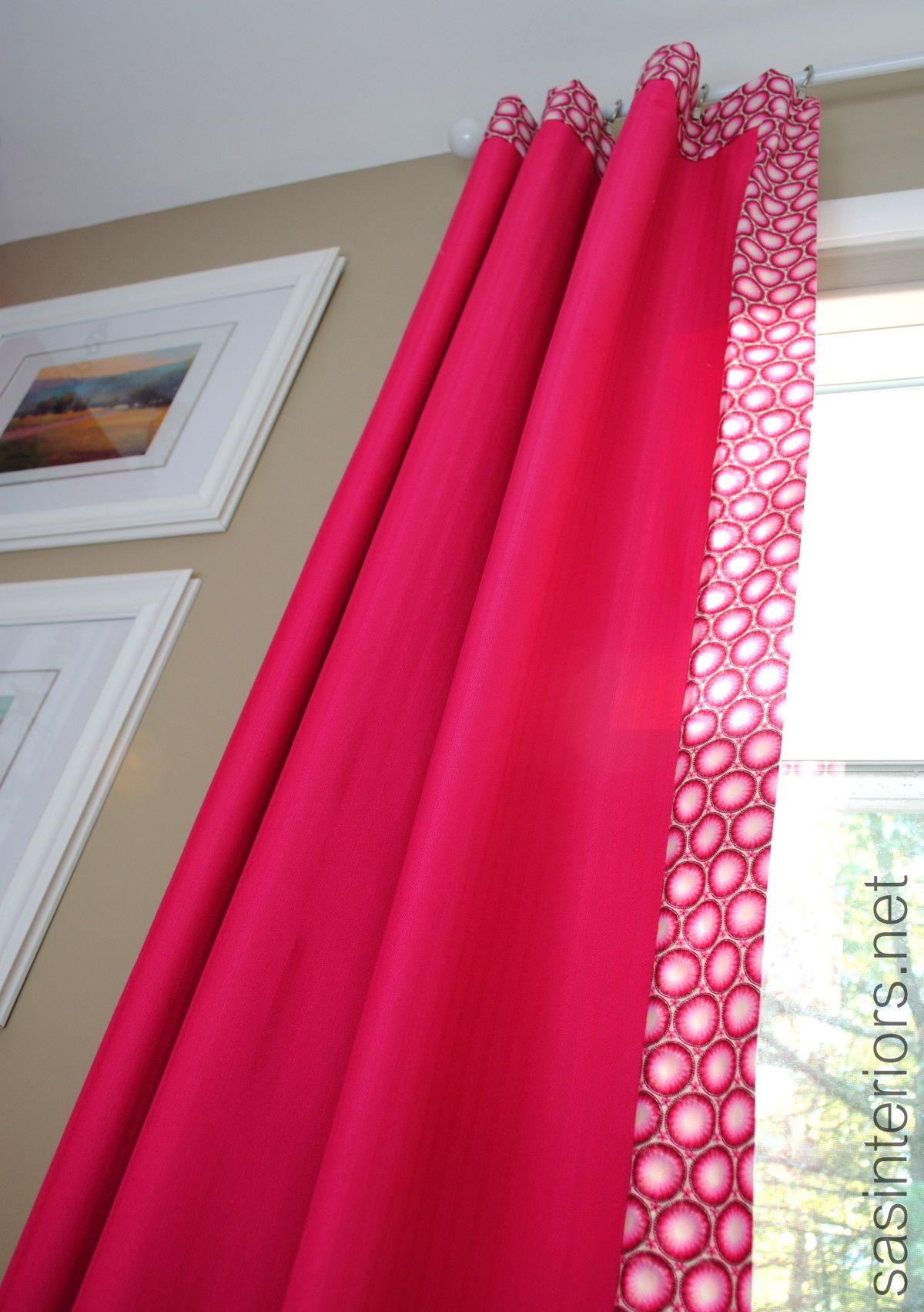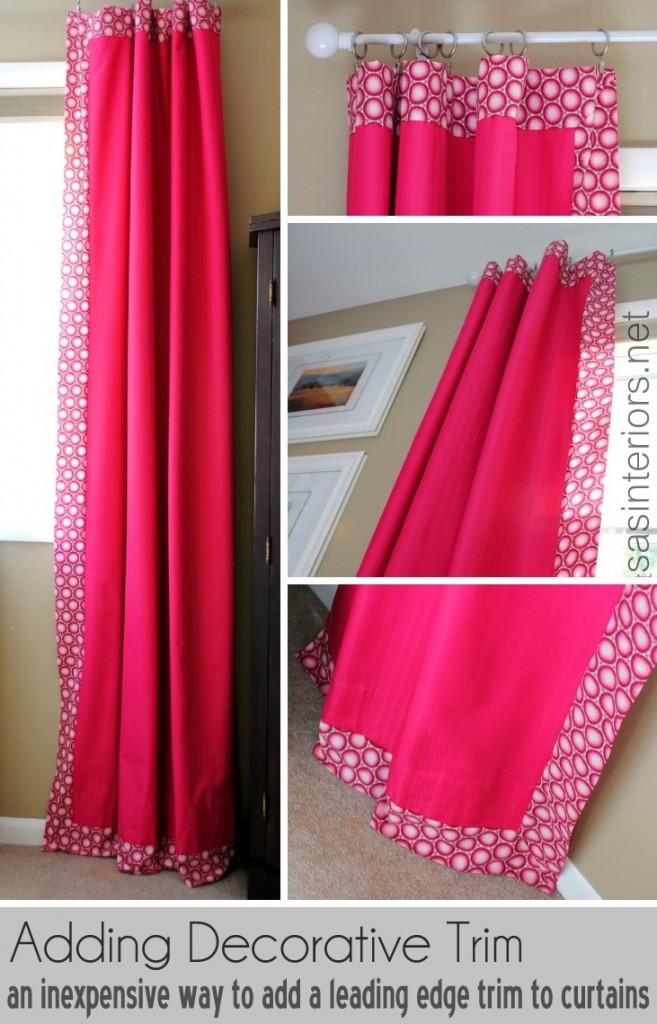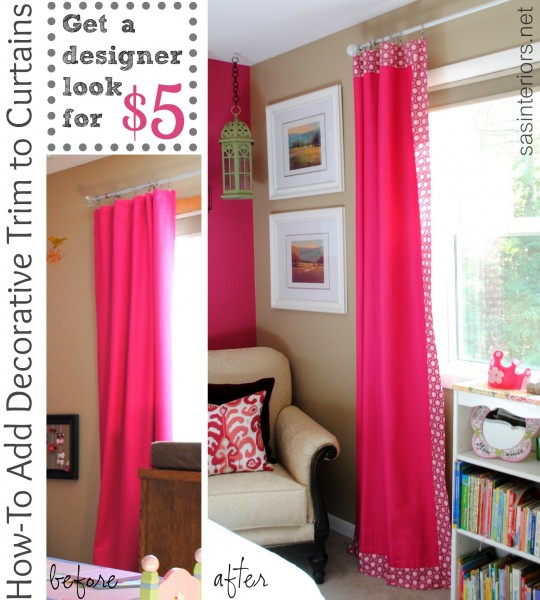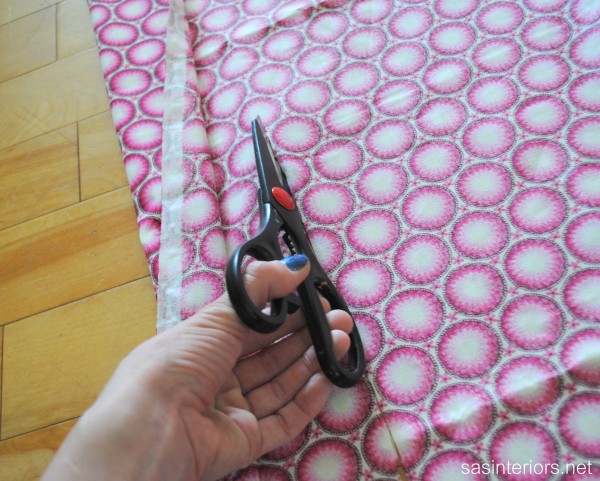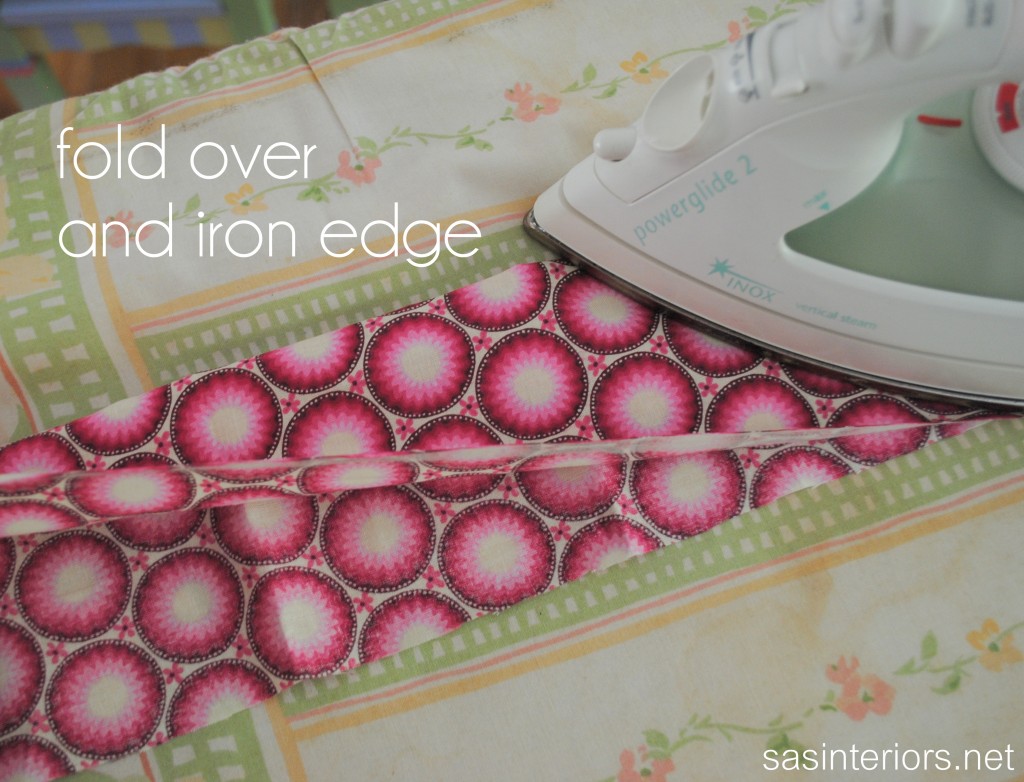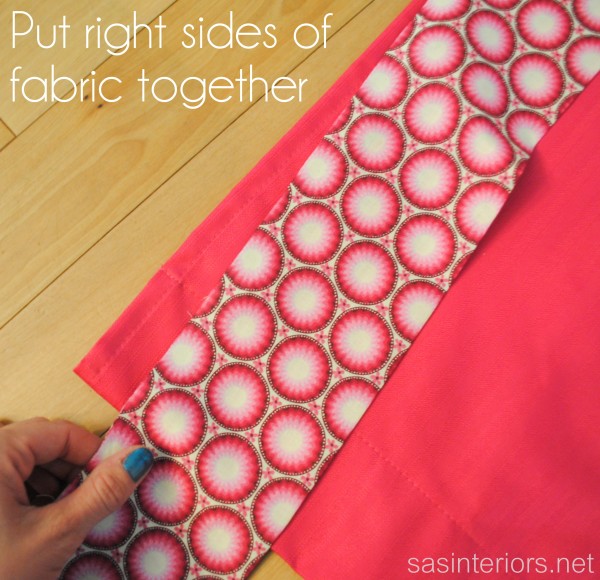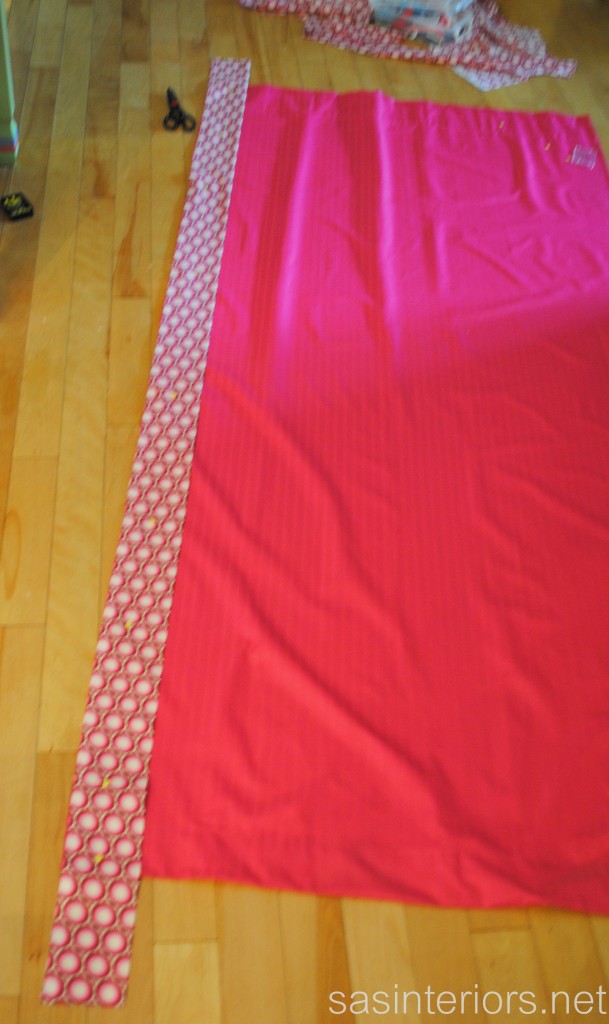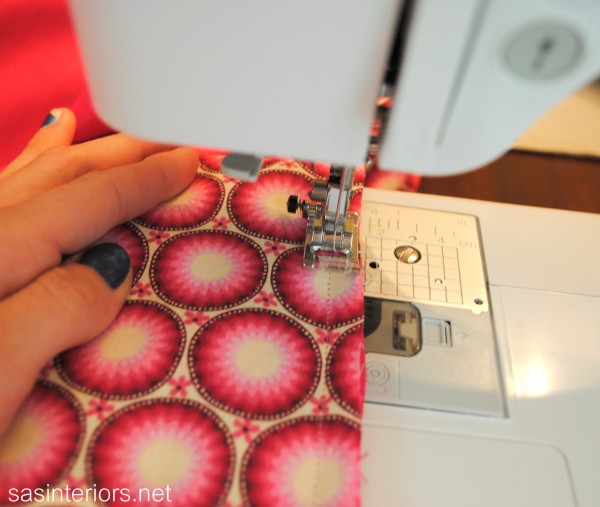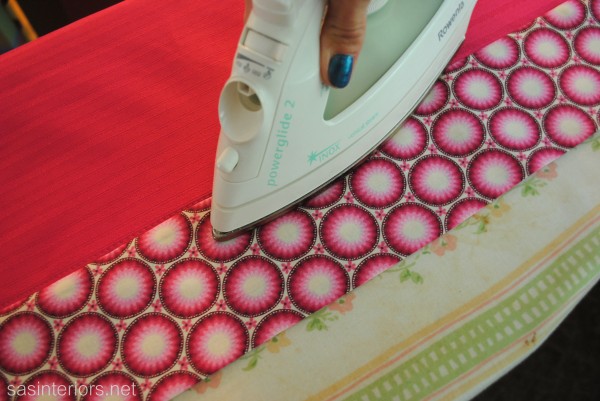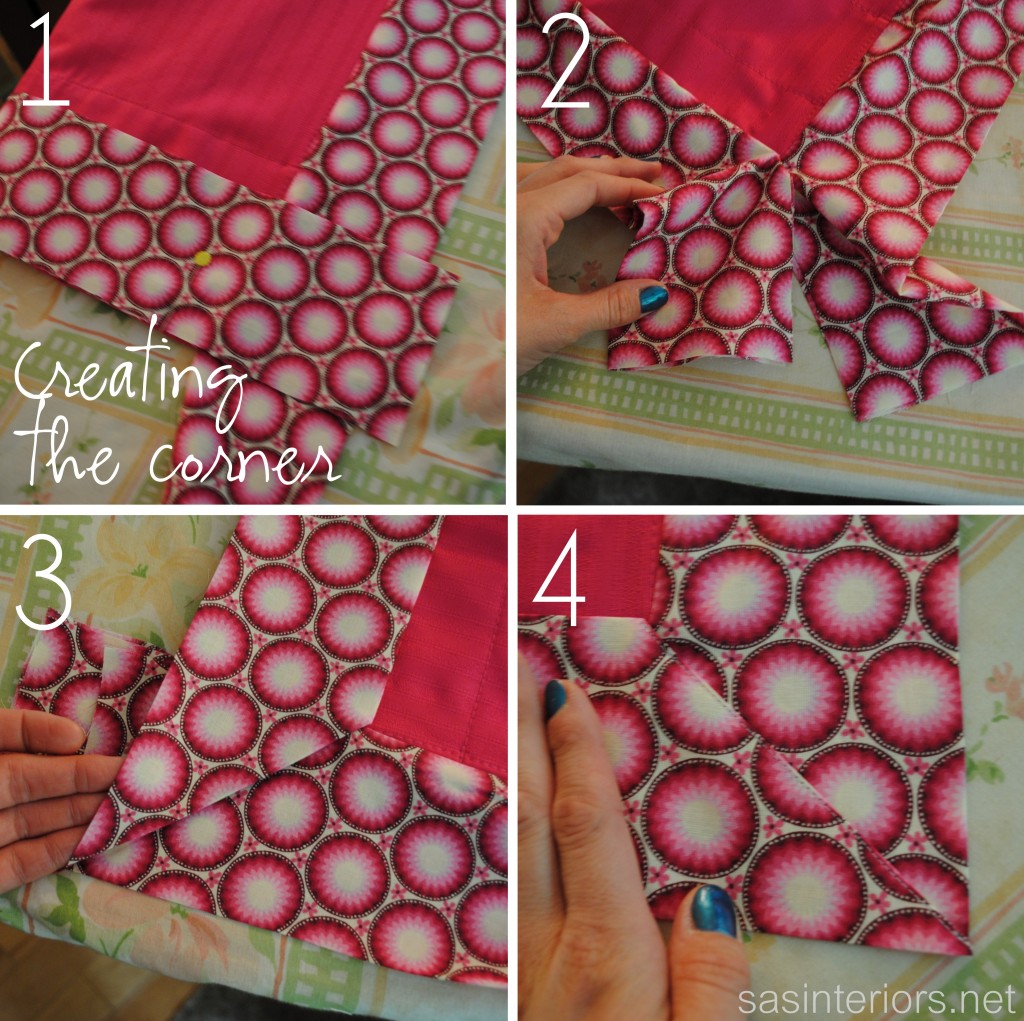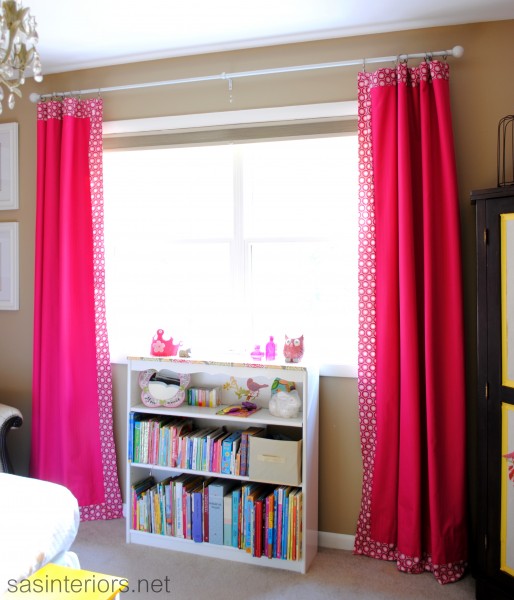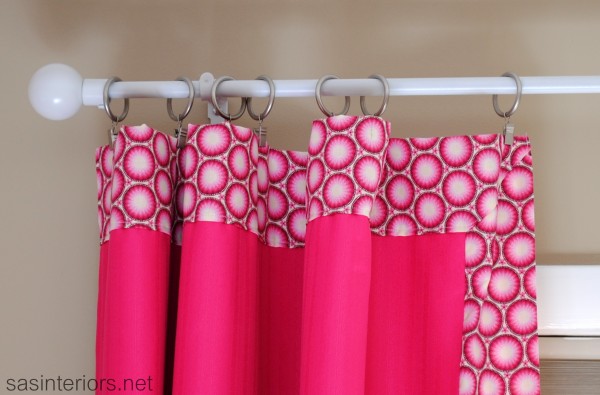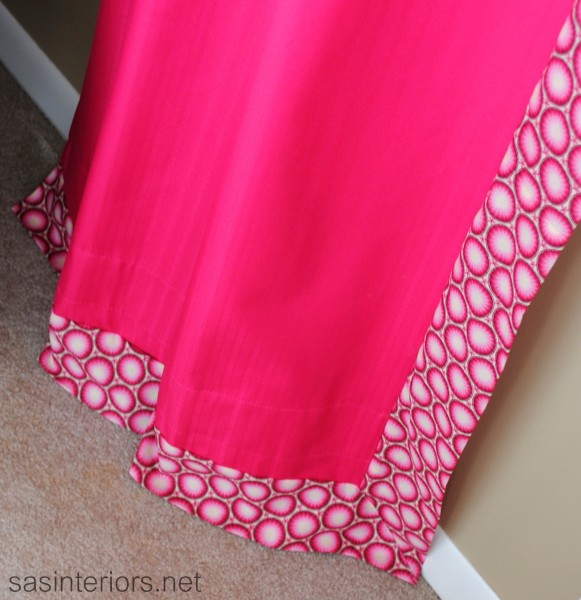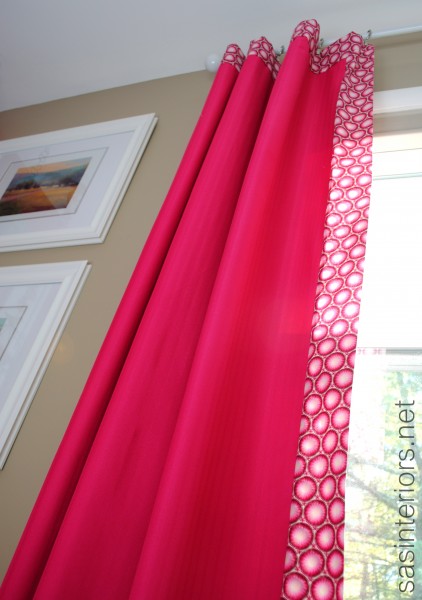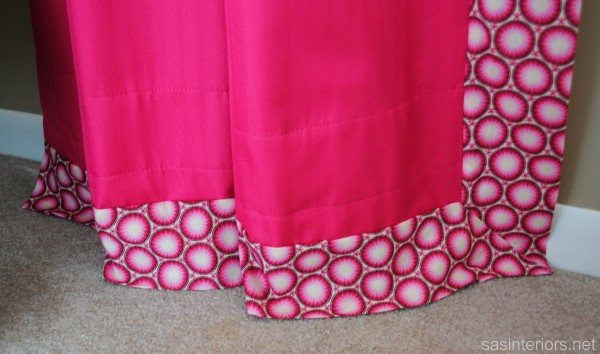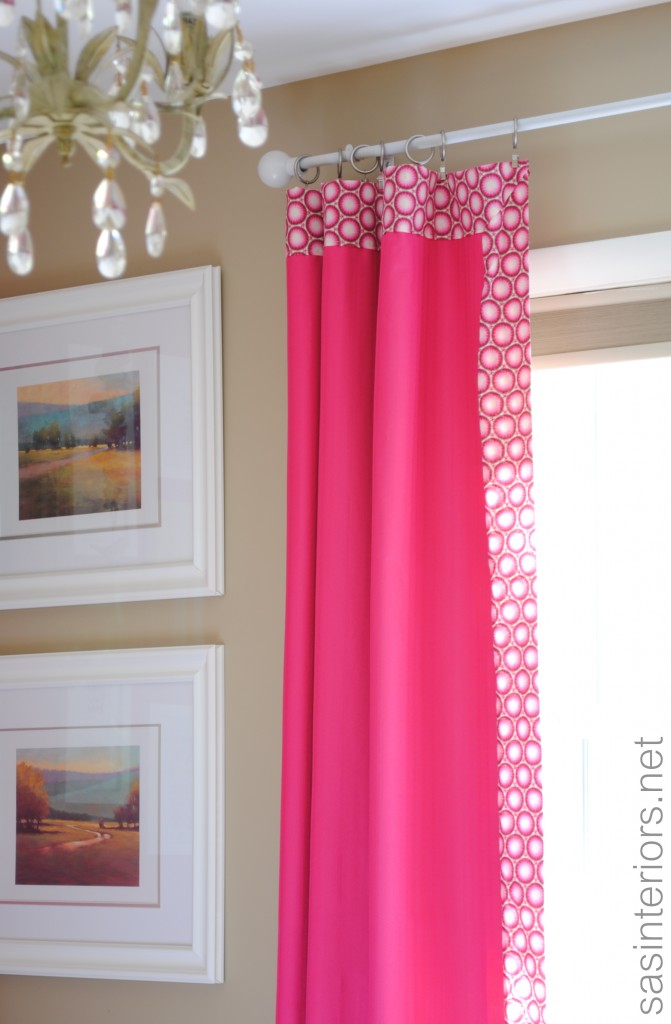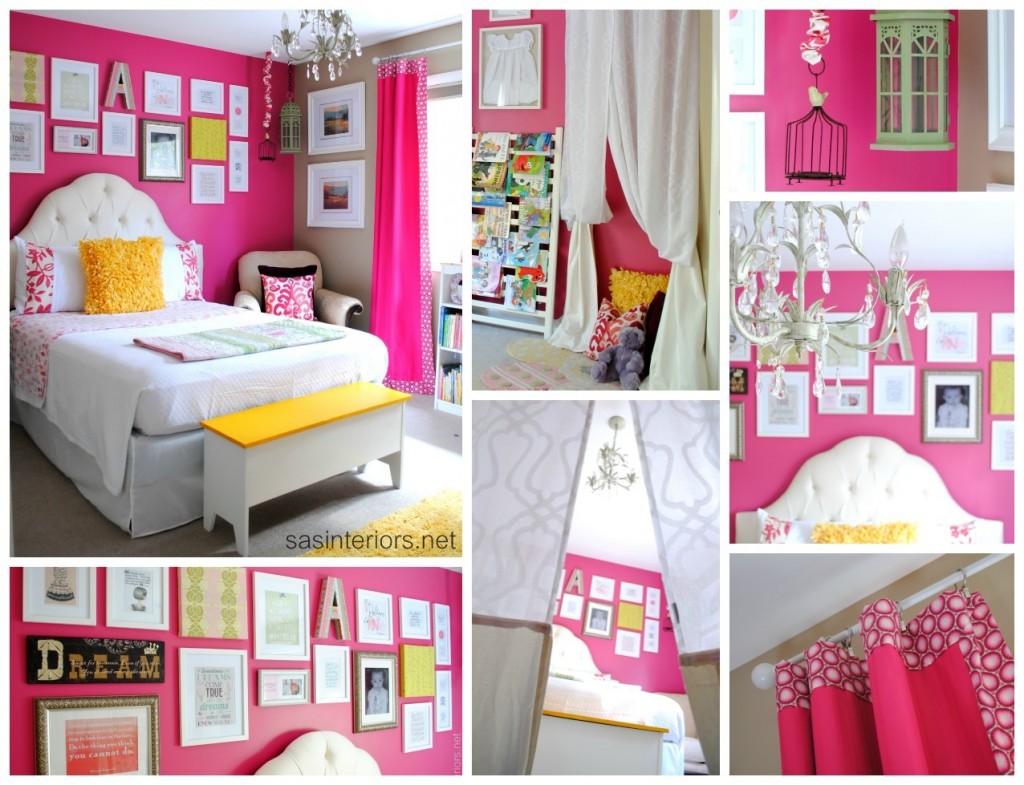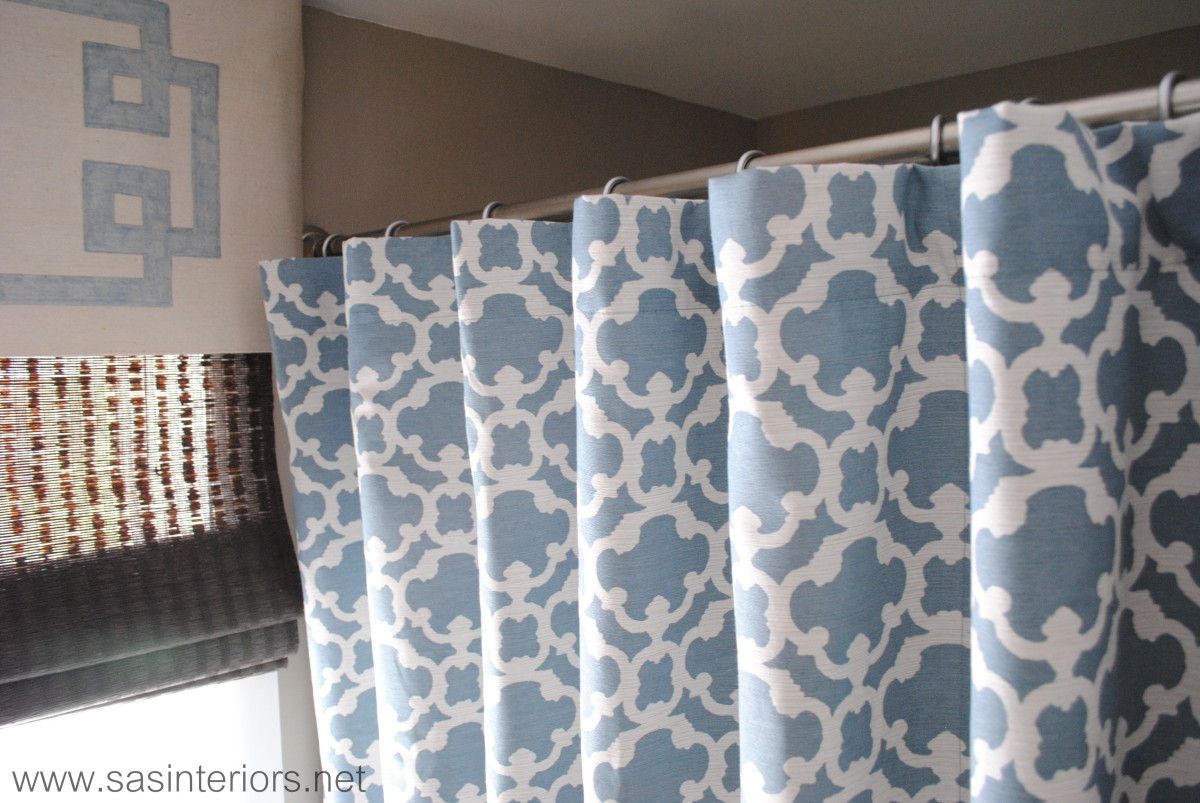How-To Add Decorative Trim to Curtains {for cheap}
It’s been fun to share a few of the many DIY updates that I made for my daughters new Big Girl bedroom, and today I’ve got another.
When planning out the room, I knew I wanted to keep the long window panels, but add some embellishments to dress em’ up a bit.
They are typical 86″ long panels that I purchased 2+ years ago from Bed, Bath, and Beyond and are a deep fuschia color with a small herringbone pattern. I always liked them but thought they were a wee-bit boring… until now.
Adding trim, a leading edge, or edge band, is a simple and inexpensive way to give an updated look and a bit of flair to any window treatment. Plus now my revamped drapes are unique and one-of-a-kind, and so can yours.
To get the look is pretty easy and costs only a few dollars.
The before panels were okay, but the after is “bam”!
To start off, the panels definitely needed to be raised alittle higher towards the ceiling (the higher the better), and adding a decorative trim band at the top, bottom, and inner side was the answer to give them a designer look.
I found this fun fabric for $3.97/yard, and one yard was just enough for the project.
To start off, I determined that I wanted a 3″ +/- leading edge band on the 3 sides.
I cut 6-1/2″ strips of fabric.
The fabric strips were not long enough for the length of the curtain panel, so I simply took the fabric ends, put right sides together, sewed, and ironed flat to create 1 long strip.
Once the long strip was created for the length and I cut two strips for the top and bottom (x2 for the other panel), I folded the strips in half (wrong sides together) and ironed.
I then aligned the unfinished edge of the trim fabric with the right side of the panel edge…
Sewed using a 1/2″ inseam….
And finished by ironing the seam flat.
After adding the leading edge band to the inner side, the bottom, and the top, it was time to focus on the corners.
Where the corners meet, I left extra fabric and rolled one side under the other to create a 90 degree angle. Then sewed the edge.
Pictures might explain it better. Take a look…
And here’s the result of my $5 Designer Update. 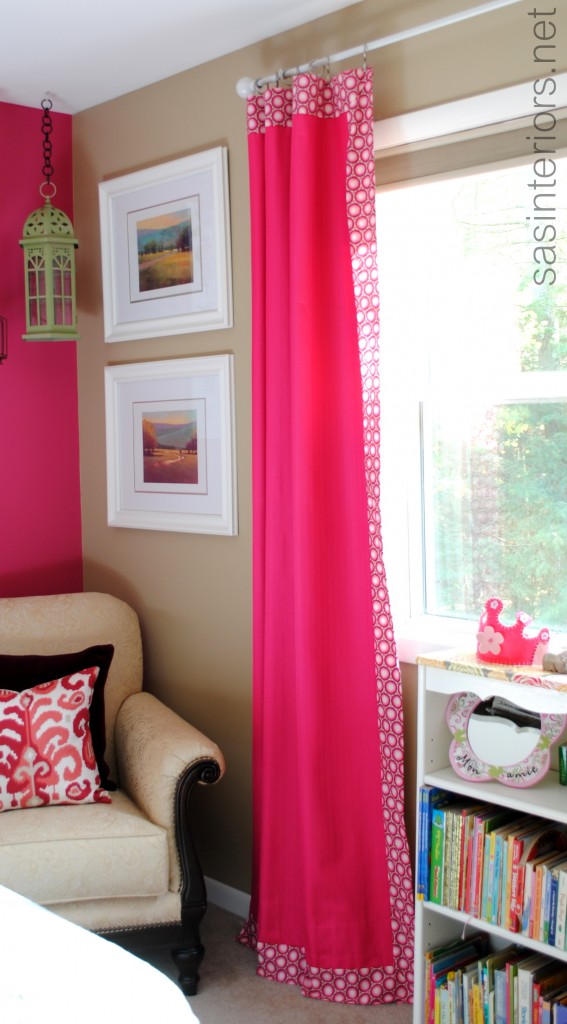
O, I forgot to mention that I also updated the drapery rod too. The before rod was purchased from Ikea years ago. No reason to get a new one when a little spray paint does a world-of-wonder!
Hello to Gloss White.
If you happened to miss the whole space, it’s a true treasure.
It’s amazing with a little fabric and/or trim, how a typical store-bought drape can be jazzed up to look designer-made!
I’m pretty passionate about window treatments (call me crazy), and if you want to read/see more, I recommend you check out these posts:
Create a Layered Window Treatment
The Right (and Wrong) Way to Hang Window Drapery Panels
DIY: How To Make Simple Lined Window Drapery Panels
